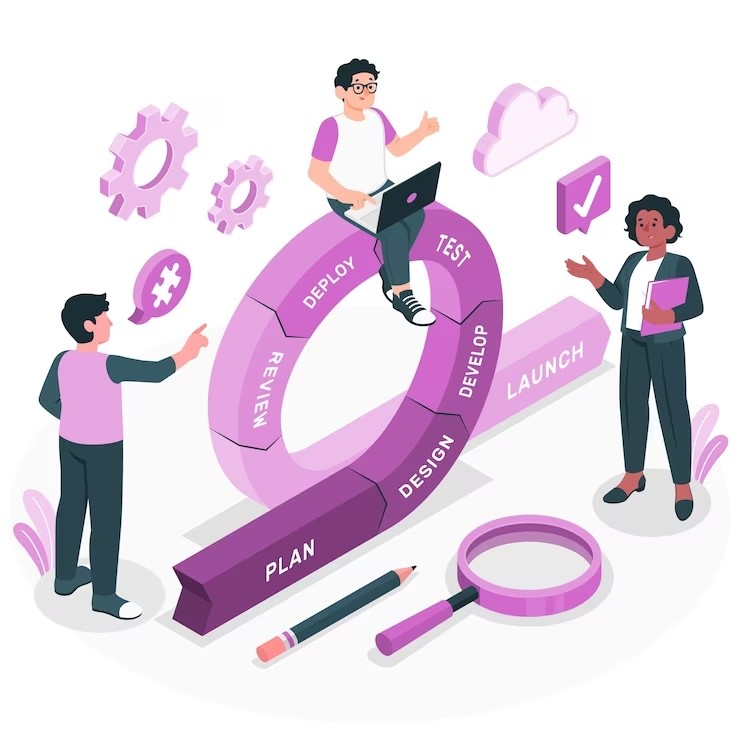Introduction
In the ever-evolving landscape of project management, where adaptability and collaboration are the keys to success, one methodology stands tall above the rest: Scrum. This revolutionary approach has taken the business world by storm, transforming the way teams work together and deliver results. Join us on a journey to discover the exciting world of Scrum methodology and how it can propel your projects to new heights.
The Essence of Scrum
At its core, Scrum is a dynamic and flexible framework that embraces change and values people above all else. It’s like a symphony where each instrument plays a vital role in creating harmony. Here are the key components that make Scrum a truly attractive methodology:
Small, Self-Organizing Teams: Scrum teams are typically small and self-organizing, consisting of cross-functional members who collaborate seamlessly to achieve common goals. This structure fosters creativity, innovation, and a strong sense of camaraderie.
Sprints: Picture sprinting in a race, and you’ll get the idea behind Scrum’s sprints. These are short, focused time frames, usually lasting two to four weeks, during which teams work intensively on a well-defined set of tasks. This time-boxed approach keeps the energy high and the momentum steady.
Product Backlog: Think of the product backlog as a treasure chest of ideas and tasks waiting to be tackled. The product owner, often the voice of the customer, prioritizes these items to ensure the team works on what matters most.
Daily Standup Meetings: Every day, team members gather for quick, stand-up meetings to discuss what they accomplished, what they’re working on next, and any obstacles they’re facing. This fosters clear communication and ensures everyone is on the same page.
Iterative Development: Scrum encourages teams to deliver small, valuable increments of work regularly. This iterative approach means that progress is visible, feedback is continuous, and adaptability is at the forefront.
The Basics of Scrum
At its core, Scrum is an agile framework that thrives on collaboration, communication, and adaptability. Born out of the need to address the shortcomings of traditional project management, Scrum offers a structured yet flexible approach to tackling complex projects.
The Scrum Team: Central to Scrum’s humanized approach is the Scrum Team. This team typically consists of three key roles:
Product Owner: The Product Owner acts as the voice of the customer, prioritizing work items and ensuring that the team is building the right features. This role requires empathy and the ability to bridge the gap between stakeholders and the development team.
Scrum Master: The Scrum Master is the team’s guide, mentor, and protector. They ensure that the Scrum framework is followed and support the team in removing any obstacles that might impede progress.
Development Team: The Development Team is responsible for designing, building, and testing the product. In Scrum, team members collaborate closely and collectively own the work, fostering a sense of shared responsibility and trust.
Sprints and Time-Boxes: Scrum introduces the concept of time-boxed iterations called “sprints.” These typically last two to four weeks and have a predefined goal. Sprints create a sense of urgency and focus, encouraging the team to deliver valuable increments of work frequently.
Benefits That Make Scrum Shine
Scrum’s irresistible allure lies in the array of benefits it offers to both teams and organizations:
Flexibility: In today’s fast-paced world, change is the only constant. Scrum’s adaptive nature allows teams to embrace change as an opportunity rather than a hindrance.
Customer-Centric: With its strong emphasis on the product owner and customer feedback, Scrum ensures that the end product truly meets customer needs and expectations.
Improved Collaboration: Scrum thrives on collaboration, breaking down silos and fostering a culture of teamwork, trust, and open communication.
Predictable Delivery: Sprints provide predictability in terms of what can be delivered within a fixed time frame, helping organizations plan and manage resources effectively.
Enhanced Quality: Frequent testing and integration mean that defects are caught early, resulting in higher-quality deliverables.
Conclusion
In the exhilarating world of project management, Scrum methodology is the shining star that brings people, processes, and productivity into perfect harmony. Its embrace of change, focus on collaboration, and commitment to delivering value make it an irresistible choice for teams and organizations seeking to achieve excellence.
So, if you’re ready to unlock the full potential of your projects, consider diving into the captivating realm of Scrum. With its promise of adaptability, teamwork, and exceptional results, Scrum is not just a methodology—it’s a journey toward project management perfection. We upskill and boost your career by providing a wide range of courses such as CSPO Certification, CSM Certification, Agile Coach Certification, etc. Visit our website to learn more about all the courses we offer.
